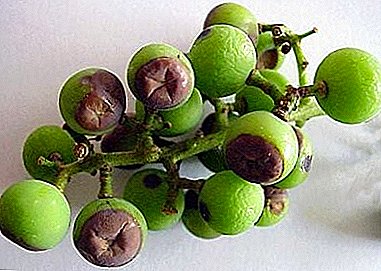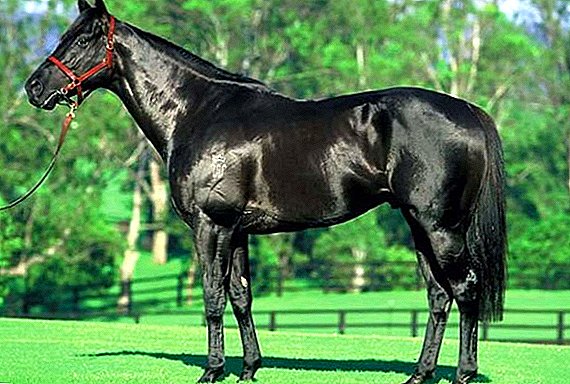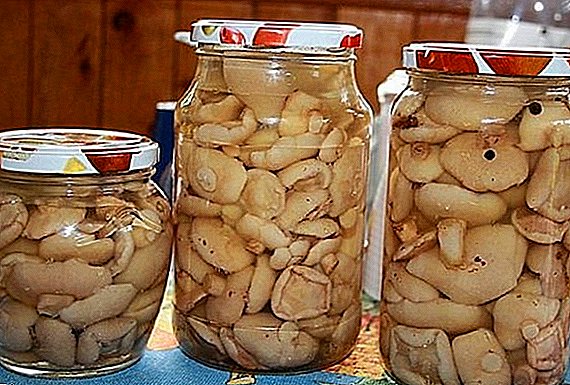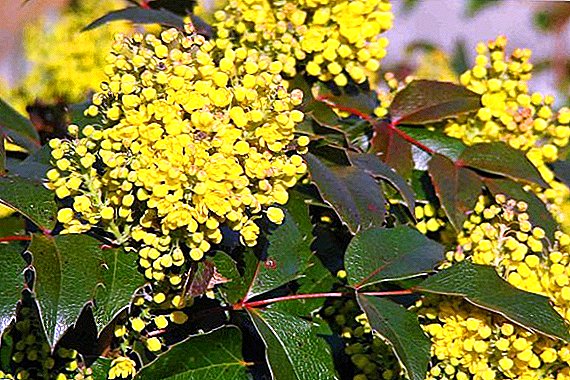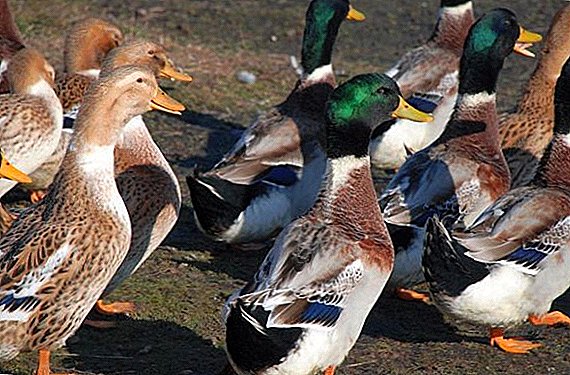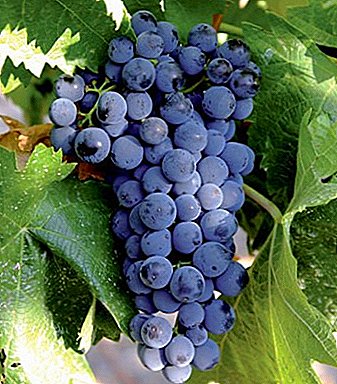
Grade Tempranillo refers to wine varieties. This sort of admired the royal personages and subjects of the Middle Ages.
Literally the word Tempranillo means "premature", "prematurely ripe". This name can be explained by the early ripening vine. The variety perfectly adapts to climatic and soil characteristics in southern sunny regions.
The main part of the grape variety Tempranillo is grown in Spain. From it produce elite wines with subtle notes of fruit, raspberry and vanilla. The variety is very naughty. He needs certain temperature factors and special care.
Tempranillo grapes: variety description
 Tempranillo berries are dark purple, almost black in color with a matte coating. The shape of the average, rounded, slightly flattened. In weight reach 6-8 grams, the size of 15x18 millimeters. In Spanish they are called "ull de llebre"what is translated means bunny eye.
Tempranillo berries are dark purple, almost black in color with a matte coating. The shape of the average, rounded, slightly flattened. In weight reach 6-8 grams, the size of 15x18 millimeters. In Spanish they are called "ull de llebre"what is translated means bunny eye.
Among the black varieties should pay attention to Sangiovese, the Pharaoh and the Bull Eye.
There is a white mutation of this variety, which is characterized by fruits of green-yellow color with a slight bloom. The flesh of dark Tempranillo is colorless, dense, very juicy. It has a thin skin.
The color of the wine depends on the thickness of the grape skin. If the shade is bright and saturated, then the skin is thick and elastic, if it is mild, the skin is soft and soft. Wines for long-term storage are made from thick-skinned fruits.
Grapes grown at high temperatures gives the wine a deep rich color. Clusters are long, cylindriconical, narrow but compact. The height of the vineyard also matters.
The vines, which are grown in the lowlands of the earth's surface, have a lower acidity than those grown above the sea coast. Because of this lack of acidity of the grapes, Tempranillo wines are mixed with the Graziano grape variety.
Vine has early maturation of shoots and long internodes.
Pruning vines on 6-8 eyes. The variety has 5-lobed, very large, wrinkled leaves. From the bottom of the deeply dissected leaf there is a slight spider pubescence of dense or medium density. Sheet notch lyrate, petiolate, can be open or closed. The teeth are large.
The crown of a young stalk is covered, has a raspberry edge. The leaves are green-yellow in color with a bronze tint. Possesses late budding. Beautiful flowering and pollination. The density of the flower is medium, bisexual.
The Count of Monte Cristo, Moldova and Galben Nou also possess bisexual flowers.
A photo
Check out the Tempranillo grapes in the photo below:




Breeding history
A great contribution to the strengthening and successful development of the Tempranillo variety was made by two friends, Riscal de Alegre and Mourietes. They were the marquess dissidents who returned from Bordeaux to Rioja in 1860.
They were the first to prove that the mutual combination of Bordeaux technologies with the Rioja system was successful.
Thanks to good financial opportunities, knowledge and enthusiasm, they were able to carry out an ambitious project.
Like-minded people used new rules for the breeding of imported varieties, purchased high-quality oak barrels and annually updated their plantings. Their results were brilliant.
They proved that to grow this grape continental climate required. It should be in equal proportion attend cold and heat. Awnings-dissidents were able to draw the world's attention to the Tempranillo variety, thereby gaining deserved recognition.
 The most severe growing environment Tempranillo gives the grapes the necessary acidity. The mild climate supports the formation of the desired skin and sugar accumulation.
The most severe growing environment Tempranillo gives the grapes the necessary acidity. The mild climate supports the formation of the desired skin and sugar accumulation.
The variety is very capricious. Grows very poorly on sandy soils.. Fertilized soils are rich in limestone content.
Capricious varieties are also Black Emerald, Rizamat and Syrah.
With such a soil, the roots of the vine are richly covered with clay and due to it they are in conditions of necessary moisture. It feels best at a sufficient height of more than 700 meters above sea level.
Tempranillo is the most famous variety of the Iberian Peninsula.
The terroir is characteristic and distinctly expressed in Tempranillo wines.
Habitat in Spain covers warm areas - Alte and the high-hill country of Penedes. To grow this grape requires a continental climate.
The variety has been successfully cultivated in Argentina, Mexico, Chile and Portugal. More recently, the success of Tempranillo came to Thailand, Romania, Italy, France, as well as the United States (Texas, Oregon).
AT Of Russia this moody variety is good survives only on slopes above 700 meters above sea level. Where there are warm sunshine - clusters ripen completely, with good fruit bearing berries. In the lowlands, where the illumination is low, the variety finally does not mature and begins to rot.
For good growth Tempranillo requires soil with a high content of limestone. At present, this variety is being planted in the southern territories - Uzbekistan, Mordovia, Dagestan, in the Krasnodar Territory.
Due to the complexity of growing and climatic conditions, Tempranillo in Russia grows only 0.5% of high profile growers.
Specifications
Tempranillo is very generous and prolific. The berries of this variety are rich in coloring pigments - anthocyanins. Productivity is high with stable fruiting.
One bush brings up to 5 kilograms of fruit.
Most favorable temperature - night 16 degrees Celsius, day 22 degrees. For grapes growing in the lowlands, 40 degrees Celsius is needed.
Such yields as Rkatsiteli, Isabella, Podarok Magaracha demonstrate high yields.
Vulnerable to wind damage. For full aging Tempranillo requires 450 mm of annual precipitation. Grapes terribly tolerate spring frosts and excessive droughts. Therefore, in bad weather conditions, the bushes of grapes are covered with a net, making a small canopy.
Disease and Pest Resistance
 Tempranillo is prone to genetic mutations and very sensitive to diseases. Due to the thin skin, it is highly susceptible to gray rot - 1 point. Vulnerable to mildew, on a scale of 2 points, a Tsikadka - 3 points, an oidium - 2 points.
Tempranillo is prone to genetic mutations and very sensitive to diseases. Due to the thin skin, it is highly susceptible to gray rot - 1 point. Vulnerable to mildew, on a scale of 2 points, a Tsikadka - 3 points, an oidium - 2 points.
Tempranillo grapes very susceptible to phylloxera. Phylloxera is an equal pest, winters on the roots of grapes.
Eggs are left under its bark, where in spring the larvae stick to the leaves. The plant begins to die.
At the first symptoms of the appearance of phylloxera, it is necessary to urgently carry out chemical treatment. To do this, suitable drugs BI-58, Karbaphos and Kinmiks.
Re-processing is done in 1-14 days.
Due to its sensitivity, grapes require protection from such misfortunes as anthracnose, bacteriosis, chlorosis, rubella and bacterial cancer. How to cope with them, see the individual materials of the site.
Features
Tempranill Blanco is considered an unusual dark Tempranillo mutation. Jesús Gagilev Esteban noticed this unusual find in 1988 year He examined his grounds in Murillo de Rio Lesa, and noticed one green and yellow twig among the deep purple ones.
He talked about his discovery to scientists from the state body CIDA. After five years in 1993 year grapes recognized fructifying and stable. His vines have been successfully cloned.
Since the early 2000s, Tempranillo Blanco has been included in the list of modern permitted varieties.
The wines made from them have different tastes, colors and characteristics.
Tempranillo Blanco berries, elongated clusters and leaves are much smaller, compared to the purple-black variety, but the life cycle has similar characteristics.
In both varieties the vine ripens well and quickly, both belong to the late term of ripening. Buds bloom late. Productivity is small.
The variety is poorly adapted to various diseases and minor pests.
 The Tempranillo grape variety requires special care. It is used to make vintage wines with subtle notes of delicate vanilla, meadow herbs, plums and berries.
The Tempranillo grape variety requires special care. It is used to make vintage wines with subtle notes of delicate vanilla, meadow herbs, plums and berries.
Due to its low acidity, it is mixed with other varieties. Refers to the late period of maturation. The variety is prone to genetic mutations.
Late maturity also have Montepulciano, Annie and Original.
Tempranillo - It is a star among the most famous grape varieties. It is from its fruits that are obtained. the best vintage wines of excellent quality.
They are considered the pride of Spain and Portugal. Winemakers of these countries claim that Tempranillo wines have a rich aroma and taste, which becomes even more luxurious after storing wine in wooden barrels.


